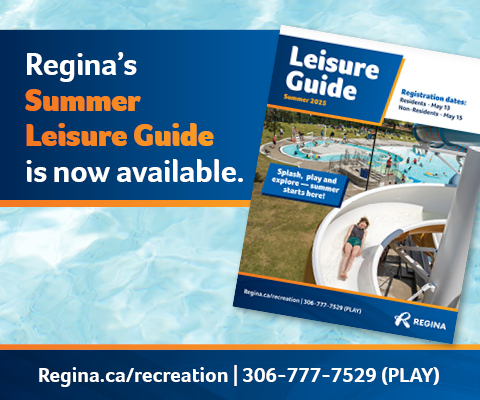Inclusive & Adapted Programs & Services
nd Astonished! Inclusive Dance Class (ages 5 to 12) Join this class for smiles, fun, and something
new! This free class is inclusive in nature, and open to all
abilities. This program is adapted to meet the diverse needs of children and youth experiencing
disabilities. Instruction is based on a variety of dance culture and movement skills, emphasizing
enthusiasm, fun and friendship through the arts with an instructor from Listen to Dis’! For more
information please email socialinclusionprograms@regina.ca or call 306-510-2025. What’s Your Style
Dance Nights (ages 17 and up) Join us for great music and dance in a friendly environment. This
inclusive dance class runs quarterly and is in partnership with Astonished! This class is open to everyone but adapted to meet the needs of individuals experiencing
disability. Instruction is based on a variety of dance culture, which emphasizes enthusiasm,
camaraderie and smiles! Registration is done through Astonished! or drop by to join in. Fitness
Adapted Sport & Fitness Try It Days (aged 18+) This once-a-month program is a free program for
adults experiencing disability(s) to enjoy a variety of adapted sports & fitness sessions. Led
by an instructor who will create a safe and comfortable environment to facilitate participation in
introductory-level sessions focused on leisure education and fun for all! We kindly ask that
individuals requiring one-on-one support/assistance please bring an attendant/support person. For
more information about this program or how to register please email
socialinclusionprograms@regina.ca or call 306-510-2025. Adapted Walk & Roll Fitness (aged 18+)
The Adapted Walk & Roll program is a registered program for adults experiencing disability(s).
The purpose of this program is to learn, maintain and improve functional skills as they relate to
physical and social wellness in a relaxed community setting. The group will utilize the Sportsplex
walking track and equipment while receiving educational & social support from City Staff. After
each session, the group is encouraged to socialize at the café located in the facility. 2SLGBTQIAP+
Drop-In Gym Time This is a free drop-in gym time for people who are transgender, non-binary and/or
gender non-conforming and their allies. This pilot program is part of the City of Regina’s efforts
to start implementing 2SLGBTQIAP+ programming as we acknowledge that there are not always safe
spaces for members of this community. Staff are offered Positive Space training and will be on site
to help set up various equipment based on the participants’ needs. This program occurs weekly on
Mondays at the Mitakuyé Owâs’ā Centre. Please email socialinclusionprograms@regina.ca for more
information. Dates can be found in the drop-in schedule. We kindly ask that individuals requiring
one-on-one support/assistance please bring an attendant/support person. For more information about
how to register please email socialinclusionprograms@regina.ca or call 306-510-2025 Warriors of the
Water Improve your swimming, leadership, teamwork, and lifeguarding/lifesaving skills. Participants
will learn the basics of swimming and water safety education as well as first aid skills.
Instructors will work with the participants the help them learn and grow their swimming ability
with an opportunity to become fully certified as a lifeguard and swim instructor. This program is
for Indigenous children and youth in partnership with Regina Treaty/Status Indian Services (RTSIS).
Lessons provided for both Juniors (8-12 yrs) and Seniors (12+ yrs). Contact
socialinclusionprograms@regina.ca for program details or to register call RTSIS at 306-522-7494.
Contact Us For more information or assistance with registration please contact
socialinclusionprograms@regina.ca. Inclusion Support Service Some individuals may require
additional support in the registration and participation process. The City of Regina introduces the
new Inclusion Support Service for those who require that support. Who is this service for? Anyone
who may need support and/or guidance in: Program selection Overcoming barriers to participation
Navigating the process of accessing recreation Anyone who may need a support staff (called Leisure
Companions) within programs, for: Emotional and social companionship Cognitive and behavioural
support and cueing Adapting program activities and equipment What does this service include? All
services below are of no cost to the participant. ...
Sewage Force Mains
View the Standard Construction Specification for Sewage Force Mains.
Comprehensive Housing Strategy
The Comprehensive Housing Strategy addresses homelessness to home ownership and includes strategies for addressing the city's housing issues.
What We Offer
ul language will not be tolerated. Workplace Health & Safety View all available job
opportunities, apply online or create a job profile. Current Openings
Ward 6 Construction Projects
View the construction projects happening in Ward 6 this season.
Snow Storage Site
on. Thank you. The City of Regina Snow Storage Site is located at the south west corner of Fleet
Street and McDonald Street/Highway 46. The site is open seven days a
week, 24 hours a day during the winter season as long as weather conditions and City of Regina snow
removal activity permits. ...
Advisory - Radon Gas
View the Advisory for Radon Gas.
Food & Yard Waste
n us in making a positive impact on our environment. Green carts resume weekly collection schedules
April 7 Food and Yard Waste Driven by valuable data and insights
gathered from our pilot participants, this citywide service not only conserves landfill space but
also champions a reduction in greenhouse gas emissions. The collected material undergoes processing
to create a usable product – nutrient-rich compost! Weekly green cart collections (April-October)
and biweekly collections (November-March) ensure a convenient and eco-friendly approach to waste
management. This service goes hand in hand with backyard composting, as it accepts a broader range
of items, including meat and dairy products. Landfilling Organic Waste Vs. Composting Organic Waste
Landfilling Organic Waste: When organic waste is disposed of in landfills, it undergoes anaerobic
(without oxygen) decomposition. ...
Paratransit Newsletter
View the quarterly Paratransit Newsletter.
Route 40
Transit Route 40 - Albert Street Express.


